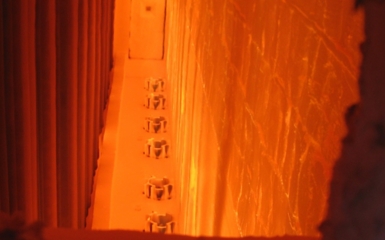Refineries rely on flares to safely burn waste gases, but these systems can also be significant sources of greenhouse gas (GHG) emissions. With tighter regulations and increasing sustainability goals, optimizing flare systems is essential. This article outlines three proven methods to reduce emissions and enhance flare efficiency, sharing advanced insights from John Zink’s decades of experience.
1. Capturing Value from Waste
Implementing a flare gas recovery system (FGRS) is one of the most effective ways to reduce flare emissions. FGRS captures waste gases that would typically be burned in flares, converts them into usable fuel, and prevents up to 90% of flaring emissions.
How It Works:
- Liquid Seals: Maintain pressure and prevent air ingress.
- Compressors: Handle varying gas volumes and ensure efficient gas recovery.
- Gas Separators: Clean the recovered gas for reuse in the refinery’s fuel system.
Benefits:
- Reduced CH₄ and CO₂ emissions.
- Cost savings by recycling gas into fuel.
- Helps meet regulatory compliance while enhancing operational efficiency.
2. Improving Combustion Efficiency
Complete combustion is critical for reducing unburned hydrocarbons, which result in higher GHG emissions. Staged flaring allows flare systems to adjust the flame size based on gas flow, ensuring more efficient combustion.
Technology Examples
- Enclosed Ground Flares (ZTOF®): High destruction efficiency with minimal visual impact.
- Multi-Point Ground Flares (LRGO™): Achieve 99.5% destruction efficiency, reducing unburned methane emissions by up to 75%.
Advantages
- Higher combustion efficiency reduces smoke, soot, and unburned hydrocarbons.
- Enhances environmental compliance and improves safety.
3. Reducing Utility Consumption
Reducing the use of utilities like steam, purge gas, and pilot gas is another effective way to cut emissions. John Zink’s Steamizer XP® Flare Tip minimizes steam consumption by 30-60%, while Windproof® and Primus® technologies reduce pilot gas use during idle periods.
Key Strategies
- Nitrogen (N₂) for purge gas instead of combustible gases.
- Staged steam systems to reduce steam usage without compromising flare performance.
Benefits
- Lower GHG emissions from reduced steam and pilot gas use.
- Improved cost-efficiency and operational flexibility.
Case Study: Emissions Reduction in a Major Refinery
A European refinery achieved significant emission reductions by implementing John Zink’s advanced flare systems, including XP® Staged Steam Flare Tips and KEGF® Enclosed Ground Flares.
Results
- CO₂ emissions reduced by 75%.
- Methane (CH₄) emissions reduced by 82%.
- Steam consumption cut by 50%.
This optimization allowed the refinery to meet stringent environmental regulations while realizing operational cost savings.
Challenges in Flare Optimization
While flare system optimization offers many benefits, it’s important to be aware of potential challenges:
- Initial Costs: Implementing FGRS or advanced flare tips requires an upfront investment, but the long-term savings and emission reductions justify the cost.
- Integration with Existing Infrastructure: Retrofitting existing systems can be complex, requiring detailed planning and skilled execution.
- Operational Disruptions: Upgrades may temporarily disrupt refinery operations. Planning for minimal downtime is critical.
- Regulatory Compliance: As emissions regulations evolve, refineries must ensure their systems are future proof.
Leveraging Our Expertise:
John Zink provides expert engineering support to navigate these challenges. Our team develops tailored solutions that integrate seamlessly with existing operations while minimizing downtime. We focus on delivering high-efficiency flare systems that meet current and future regulatory requirements. With proven experience in system retrofits and on-site technical support, we ensure smooth implementation with minimal disruption, maximizing both performance and compliance.
Evaluation Criteria: Measuring Success
Refineries optimizing their flare systems should evaluate the following key metrics:
- Emission Reductions: Quantify the decrease in CO₂ and CH₄ emissions.
- Combustion Efficiency: Ensure the system consistently achieves high destruction efficiency (>99%).
- Utility Savings: Track reductions in steam and gas consumption to assess cost-efficiency.
- Return on Investment (ROI): Monitor how operational savings offset initial investment costs over time.
Conclusion
Optimizing flare systems presents a valuable opportunity for refineries to reduce their environmental footprint while driving operational efficiency. By integrating flare gas recovery, improving combustion efficiency, and minimizing utility consumption, refineries can achieve significant reductions in GHG emissions.
For more information on how John Zink can help you optimize your flare systems, contact us for tailored solutions and expert advice.



